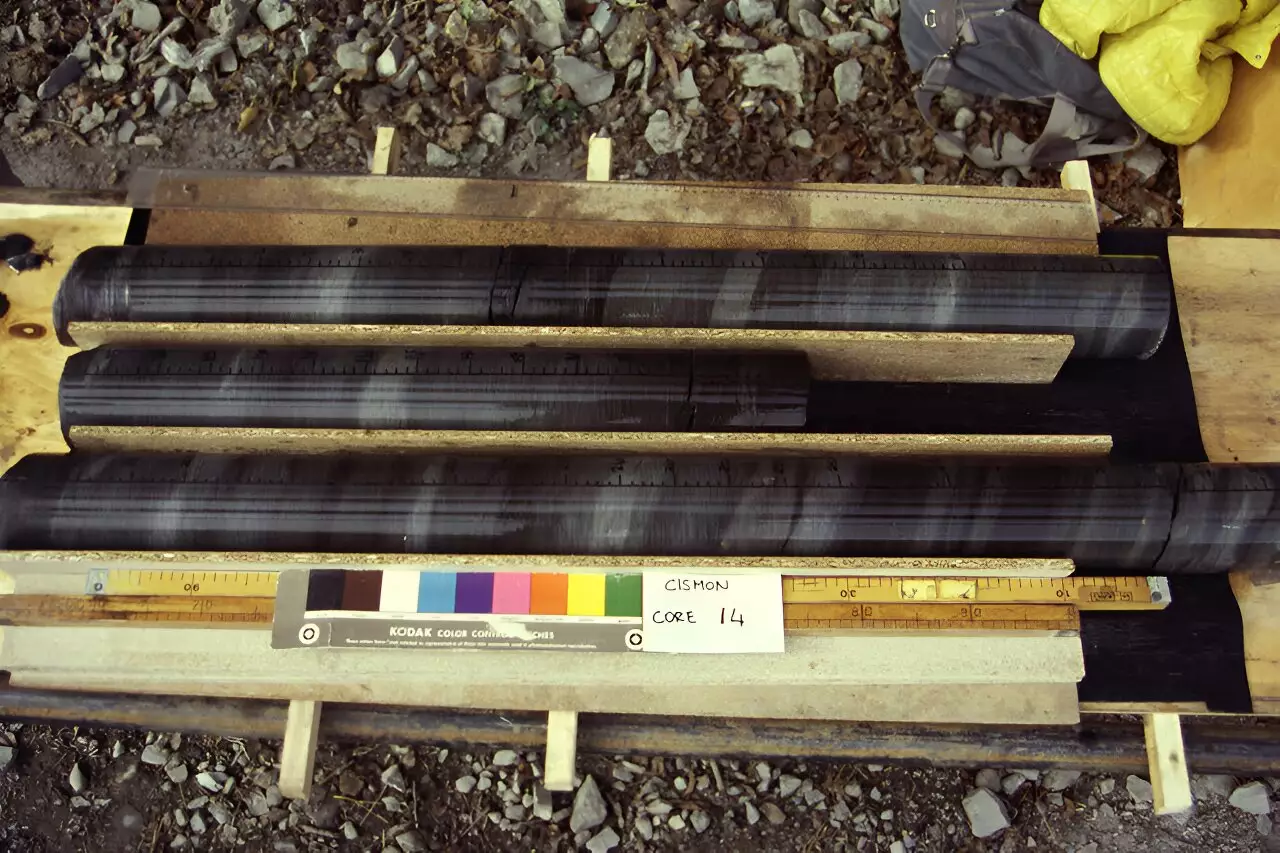The Earth’s history is rife with natural events that have shaped its current climatic and ecological systems. Among such events, a significant turning point occurred over 120 million years ago, when massive emissions of carbon dioxide (CO2) from volcanic activity led to an extreme episode of ocean deoxygenation. New research delves into this ancient event, revealing critical insights that can potentially guide contemporary climate policy and science.
A recent paper in Nature, authored by Kohen Bauer and his team at Ocean Networks Canada, brings to light a meticulously reconstructed timeline of environmental changes during the Early Cretaceous period. By analyzing sedimentary rocks dating between 115 and 130 million years, originally deposited in ancient marine settings, the researchers charted the atmospheric conditions of Earth during that epoch. The study’s approach involved a sophisticated geochemical analysis of the samples, granting scientists a high-resolution perspective on long-term climate dynamics.
The findings suggest that unprecedented volcanic activity led to a surge in atmospheric CO2 levels and marked a critical crossing of a climate warming threshold. This phenomenon prompted widespread and enduring oceanic deoxygenation, which persisted for an alarming two million years—an extended duration that poses vital questions for today’s climatic conundrums.
Climate scientists often refer to the concept of “tipping points” in environmental discussions. These thresholds represent critical levels of change beyond which ecosystems can shift irreversibly. Bauer’s research echoes this concept, positing that the rapid increase in CO2 during the Early Cretaceous was not merely an environmental hiccup but a profound transformative event. As Bauer states, the ramifications of exceeding current atmospheric CO2 thresholds could mirror those ancient patterns, resulting in a cascade of negative consequences for marine biodiversity and human health.
In contrast to Earth’s past volcanic eruptions, the current trajectory of human-induced CO2 emissions unfolds on an accelerated timescale, exacerbated by industrialization and fossil fuel consumption. The disparity in the rate of emissions underscores a stark reality: the planet may soon confront conditions reminiscent of those that allowed ancient oceans to turn anoxic, threatening species and ecosystems that are vital to the planet’s health.
Historically, Earth’s climate has demonstrated resilience, yet such recoveries are neither swift nor guaranteed. The study highlights that the reoxygenation of ancient oceans required conditions to shift significantly, with CO2 concentrations needing to fall below critical thresholds. This natural stabilization mechanism hinges on rock weathering—a process that acts as a significant regulator in the Earth’s long-term carbon cycle.
The implications of understanding these natural recovery patterns are profound. They serve as a reminder of the Earth’s capacity for self-regulation while also emphasizing the long timeframes required for such processes to unfold. In the event of significant anthropogenic disruptions, the legacy of past climate shifts reminds us that Earth’s pathways to recovery may not neatly align with human timelines or expectations.
The authors urge modern-day policymakers and environmental advocates to consider the historical narratives embedded within Earth’s geological records. The need for proactive climate mitigation strategies is essential given the mounting evidence that current CO2 emissions could push the celestial scales toward catastrophic outcomes. Just as ancient oceans became devoid of oxygen due to natural processes beyond their control, today’s marine environments are similarly vulnerable.
As we navigate the ecological challenges of our era, it becomes increasingly crucial to recognize the interconnected nature of climate systems. The pivotal feedback mechanisms that previously regulated climate—such as silicate weathering—remain relevant to discussions on sustainability and environmental management strategies today.
Other recent studies, including findings presented in Nature Ecology and Evolution, align with Bauer’s assertions, indicating that ocean deoxygenation represents a critical planetary boundary. The concept of planetary boundaries serves as an essential framework for gauging human impacts on the Earth’s systems and underlines the dangers in crossing these limits.
Understanding the relationships between ocean health, climate change, and biodiversity loss cannot be overstated. In the face of substantial threats to both marine and terrestrial ecosystems, it is through integrated efforts encompassing scientific inquiry, public policy, and community action that we can potentially navigate and indeed mitigate these existential risks.
Through the lens of past climatic events, we glean valuable lessons worth heeding. The past, as shown by Bauer’s research, is not merely history but a resonating echo that can inform our current choices and chart a sustainable path for future generations.

